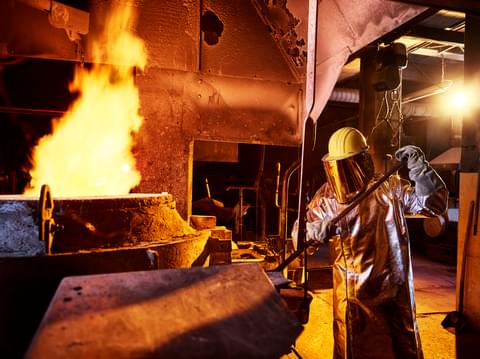
Experience unwavering safety in the harshest environments – Explore our innovative temperature-adaptive PPE solutions for those working in or near extreme temperatures.
In challenging work environments where extreme temperatures pose inherent risks, the significance of reliable clothing for extreme heat and cold and Extreme Temperature Personal Protective Equipment (PPE) cannot be overstated. At Tower, we understand the critical need for effective protection against the two extremes -scorching heat and freezing cold.
Whether it's leather aprons for welders or insulated jackets for those working in cold storage, our extensive range of clothing for extreme heat and cold and accredited personal protective equipment PPE is meticulously designed to provide unparalleled safety and comfort for workers facing extreme conditions. This keeps workers safe whilst still able to carry out their roles effectively. Our range of branded PPE options also allows you to keep your workers safe whilst remaining professional and maintaining a strong brand identity.
Sustainability plays a big role here at Tower. If sustainability is a key part of your organisation, then we offer a range of sustainable PPE and workwear.
When it comes to extreme protective gear for the cold, wearing multiple layers, especially heavy ones, will keep workers warm whilst sitting still. But most jobs require workers to move around and often sweat. We recommend avoiding heavy layers that might restrict movement, with a base layer of clothing that moves moisture to the clothing surface.
It can be tempting to wear nylon or polyester as materials for keeping sweat away. But they can be a disaster in an electrical accident. Even when worn underneath arc-flash clothing, synthetic fabrics can melt to the wearer’s skin in an arc-flash incident, causing potentially life-threatening burns.
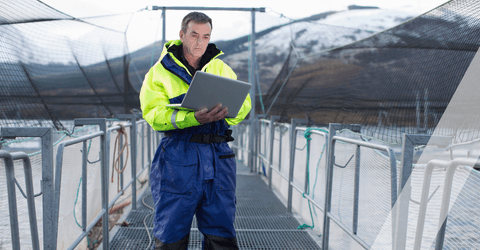

PPE for extreme temperatures is essential for those working in cold storage and other freezing environments, as they run the risk of frostbite, hypothermia, and death. Lower temperatures and exposure increase the rate of these risks occurring. Cold, high winds, and cold water, also contribute to cold stress on the body.
Cold storage PPE such as jackets, salopettes and coveralls should be well fitted, although not too tight as this will restrict blood flow. It needs to be well insulated, water resistant and durable. It’s also important clothing suits the work and activity, not just the temperature and environment.
Cold store gloves need thermal liners but also need to be well fitted so users can still perform tasks to a high standard. Boots must be insulated, water resistant and well ventilated. They must also be well fitted, whilst allowing enough room for thick thermal socks.
Overheating can lead to a loss in concentration, which needs to be avoided in dangerous environments. Or even worse, it could lead to heat stress or death. This means for high-heat protective gear in extremely hot environments, it’s vital you choose breathable garment options that keep workers as cool as possible.
Intense heat requires heavier protection. But this doesn’t mean that workers need to be surrounded by a full-body shield. It’s important to choose high-temperature protective clothing and PPE that keeps them safe for single-sided hazards like sparks or radiant heat but helps them stay cooler with coverage only where it's needed.
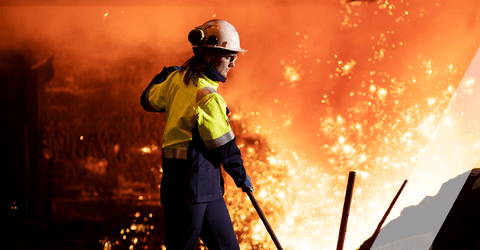
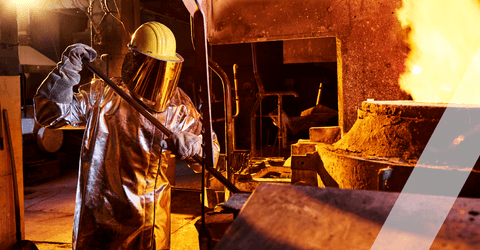
Those working near extreme heat and furnaces such as welders, power plant engineers and metal workers need to wear heavyweight, closely woven, 100% wool or cotton garments to shield themselves from UV rays, hot metal, sparks, and open flames. But it’s important to look after PPE, because after each wash, flame retardant coatings lose some of their effectiveness.
For welders to protect their wrists and forearms, they need to wear leather gloves with gauntlet-style cuffs or protective sleeves made of a similar material. Dark coloured protective clothing is also needed when working near furnaces as it prevents light reflection that can cause damage to eyes.
Leather aprons are a useful form of extreme-temperature protection from sparks, as leather is a good electrical insulator. It’s important for welders to not wear jewellery, or any synthetic items of clothing as this type of fabric is an aggressive burner, which easily causes bad skin burns.

This guide is designed to help you understand the importance of personal protective equipment in the workplace.

Provides an overview of the products, services, and solutions that can help you be more sustainable when it comes to workwear and PPE
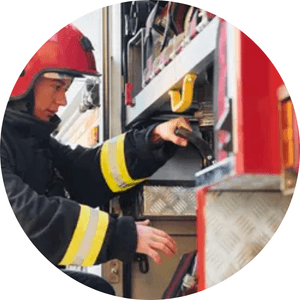
This article will help you choose the right PPE for the task at hand and navigate the equipment you need for a safe and comfortable workplace
If you want to know more about how to protect people that work with or near extreme temperatures with PPE, fill out a contact form below or call 01202 718000.